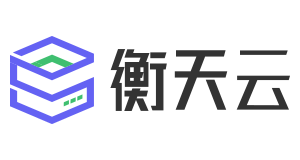Introduction
As chatbots become more popular, there is an increasing demand for chatbots that are capable of providing an interactive and personalized experience to users. One of the key factors that determine the effectiveness of a chatbot is the language model used to generate responses. In recent years, several Generative Pre-trained Transformer (GPT) models have been developed that are highly effective in generating natural language responses. In this article, we will discuss various GPT models and their capabilities to help you choose the best one for your chatbot.
GPT⑴GPT⑴ was the first model developed by OpenAI and was trained on a large corpus of text data to generate natural language responses. While it was a significant breakthrough in Natural Language Processing, GPT⑴ had several limitations, such as poor sentence structure and unnatural responses. As a result, it was not highly effective in generating personalized responses.
GPT⑵GPT⑵ is a more advanced version of GPT⑴, and it was trained on a much larger corpus of data. GPT⑵ can generate high-quality responses that sound natural and human-like. It can also generate responses that are highly personalized based on the context of the conversation.

GPT⑶ is the latest and most advanced GPT model developed by OpenAI to date. It was trained on an enormous corpus of data, resulting in its ability to generate incredibly high-quality responses that are virtually indistinguishable from human-generated responses. GPT⑶ can also generate responses in multiple languages, making it an attractive option for chatbots with a global audience.
Choosing the Best GPT Model for Your ChatbotWhen choosing the best GPT model for your chatbot, there are several factors to consider. The first is the level of personalization you require. If you need a chatbot that can provide highly personalized responses, then GPT⑵ or GPT⑶ are your best options. However, if your chatbot does not require a high degree of personalization, then GPT⑴ may suffice.
The second factor to consider is the size of your chatbot. GPT⑵ and GPT⑶ are both very large models, with GPT⑶ being the largest. If you have a small chatbot, then GPT⑴ may be a better fit, as it is smaller and requires less computational power.
ConclusionGPT models are becoming increasingly popular for chatbots, and for a good reason. They are highly effective in generating natural language responses that can provide an interactive and personalized experience to users. When choosing the best GPT model for your chatbot, considering factors such as personalization and chatbot size can help you make an informed decision.
本文地址:https://www.htstack.com/news/7378.shtml
特别声明:以上内容均为 衡天云(HengTian Network Technology Co.,Limited) 版权所有,未经本网授权不得转载、摘编或利用其它方式使用上述作品。





